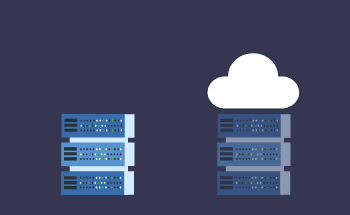Unveiling the World of Distributed Storage: Types and Real-world Examples
11:34, 08.04.2024
Exploring the Realm of Distributed Storage: Definitions and Practical Instances
Nowadays, probably the most important thing is the security of the available information because everything in our society evolves among data, its sharing, and usage. The distributed storage is a type of framework where information is not limited by one device or a certain place. Just on the contrary, the data is distributed across various locations, usually, it functions due to the network of connected machines or repository mechanisms.
Decentralized storage is designed for data that is stored on several locations and devices, but not restricted by one certain place or device. This framework helps users to have access to the network of devices for accessing, managing, and sharing information. If the data is available from various locations, it guarantees better availability, higher access speed, and redundancy.
The Mechanism Behind Distributed Storage
If simplifying the mechanism behind the distributed storage, then the data is divided into parts and each device in the network has a certain chunk of information. Because of the decentralization, it is possible to:
- Get a better speed, because lots of users can get access to various parts of the same information simultaneously.
- Have better recovery mechanisms and regular backups to guarantee redundancy.
- Balanced load. This is achievable by spreading data among several devices.
The distributed storage can be divided into 2 types such as:
- Object-based frameworks. Such type of frameworks has data that is stored in the objects and each element has its unique key. The object can be stored either on one device or in a couple of machines, and the accessibility of the objects is always guaranteed.
- File-based frameworks. With this framework, the files but not the objects are shared across nodes. Each device in the network has a chunk of the data.
To understand the mechanisms of distributed storage functioning even better, let’s discuss the major elements of the system:
- Nodes. The base of the framework consists of individual machines (nodes) that contain the parts of the information.
- Network. In order to function, all these nodes should be connected somehow so the network is a crucial component of the system. For the proper functioning of the network, it should have high-performance characteristics and reliability.
- Software for the management process. All the data on the nodes should be managed somehow. That’s why a specific software should guarantee the security of the stored information.
- Replication. To guarantee the availability of the stored information in some emergent situations, the data should be duplicated on different devices.
- Coordination. This is really important because users should always access the same data so information on all the devices should be consistent.
The use cases of the frameworks are the following:
- Recovery and backups. This type of storage can be used for storing backups. That is rather helpful in case you need to restore important data.
- Hosting. Users of web hosting solutions should store their static files somewhere so distributed storage is a great option.
- CDNs (or Content Delivery Networks) need this type of framework to deliver information to the closest users when speaking about location.
Unpacking the Significance of the Rising Prominence of Distributed Storage Systems
There are a variety of reasons why distributed storage systems became so significant for users and here are a couple of explanations:
- High scalability of the frameworks. These systems were created with the understanding that volumes of information are huge and the amount will also grow in the future. So the system is functioning in such a way that lots of nodes in the network can be easily added and data is also replicated.
- Huge volumes of data. These amounts are growing because of data analytics, mobile devices, and increased usage of the internet.
- Budget. Traditional storage systems are more expensive when compared with distributed storage. The price is lower due to the commodity hardware.
Evaluating the Advantages and Drawbacks of Distributed Cloud Storage
Advantages:
- Reliability. The system works in such a way that even during some kind of failure, the data is accessible anyway.
- Price. You can save finances in case you store more data. In some situations, users can overpay for small volumes and save significant sums on huge volumes.
- Accessibility. Your information can be easily accessed from any location and at any time.
Drawbacks:
- Issues with security. There exist some concerns with online data storage because of some obvious threats that exist right now such as hacking, and virtual attacks.
- The difficulties that are connected with setting up and management of the system.
- Cost variability might be challenging to understand if you are a new user.
Distributed Storage Examples
The most obvious examples of decentralized repositories that come to mind right away are cloud storage such as iCloud, Google Drive, and Dropbox. With the usage of these decentralized cloud storage, clients can easily upload any type of information that will be immediately stored on several secure and reliable servers. For the convenience of users, services offer link sharing with others so the information is easily accessible and downloadable.
One more example of extremely used cloud storage is Amazon S3. This decentralized storage system is mostly oriented towards object storage. All the objects within a system are identified by a key and they are stored world-widely.
HDFS or Hadoop File System is also a decentralized framework that is used mostly for storing huge data volumes connected with analytics. This system functions on commodity hardware so the prices are rather reasonable.
Azure Blob Storage is one more popular decentralized cloud repository that is predominantly focused on the storage of objects. This decentralized system is ideal for storing huge volumes of unstructured information. That’s why, you can store absolutely anything starting from files and ending with images and videos.
Another variant of a decentralized framework is Ceph. This perfectly scalable option can be used by variety of clients who are searching for a place to store their files, objects, or even block storage.
Google Cloud Storage is one more awesome option among all the available cloud repositories for object storage. This solution was created as a universal option for a wide range of users who need to store huge volumes of information for analytics, backups, web hosting purposes, and disaster recovery.
Here are only a couple of extremely popular options for decentralized cloud repositories so that you’ve got a general understanding.
Categorizing the Various Types of Distributed Storage Systems
Based on our professional observations, we can categorize distributed storage systems according to the following types:
- Repository for object storage. This type of repository is ideal for unstructured data because it accepts all the information as objects. Such repositories can work with large volumes of information.
- Block repository. This system divides information into blocks and these blocks are stored in separate nodes.
- File repository. Usually, information in this type of storage is in the form of directories and files.
Distinguishing Between Distributed Storage and Centralized Storage Models
Centralized storage models and decentralized distributed storage are totally different systems that have minimum in common. In order not to overwhelm you with the range of differences, we decided to share only the major variability.
In centralized storage, all the data is in one machine or server. The peculiarity of such a method is in the simplicity of system management. As everything is in one place, there are no challenges connected with diverse networking. The drawback is minimal scalability and high risks of failures because data is stored in one server.
As for the decentralized distributed storage, it functions differently. All the information is spread across different machines or servers. Such a method improves the scalability of the system, redundancy, and also guarantees better performance characteristics.
The Business Perspective: Reasons for Adopting Distributed Storage
From a business point of view, distributed storage is a great choice because of the cost savings. The price for this solution is way cheaper if you need TB storage. With traditional methods, you will definitely overpay.
One more reason for the adoption of this framework is flexibility. The system quickly reacts to the changing needs and that is awesome. Except for flexibility, businesses also prefer more scalable options. So, decentralized storage works perfectly with huge volumes of data and has excellent performance.
Security is also a fundamental factor that influences the choice of storage. With a distributed solution, users don’t need to worry about the loss of data, because of regular backups and data replication.
Centralized vs. Distributed: An Analysis of Storage Approaches
From our professional point of view, there is no good or bad variant. Everything depends on the business needs of every individual user. So, let’s discuss some of the major differences between these 2 approaches.
A centralized approach is way easier for an average user who doesn’t have any technical skills. All you need to do is just register your account and upload the needed data. Lots of features make the process even simpler to use the system.
As for the decentralized method, it has minimal failure risks. When one node is not functioning then you can get the same data from another one that is available. Also, there is no need to rely on a single web provider. As the information is divided into several nodes, there are no vendor lock-in effects.


